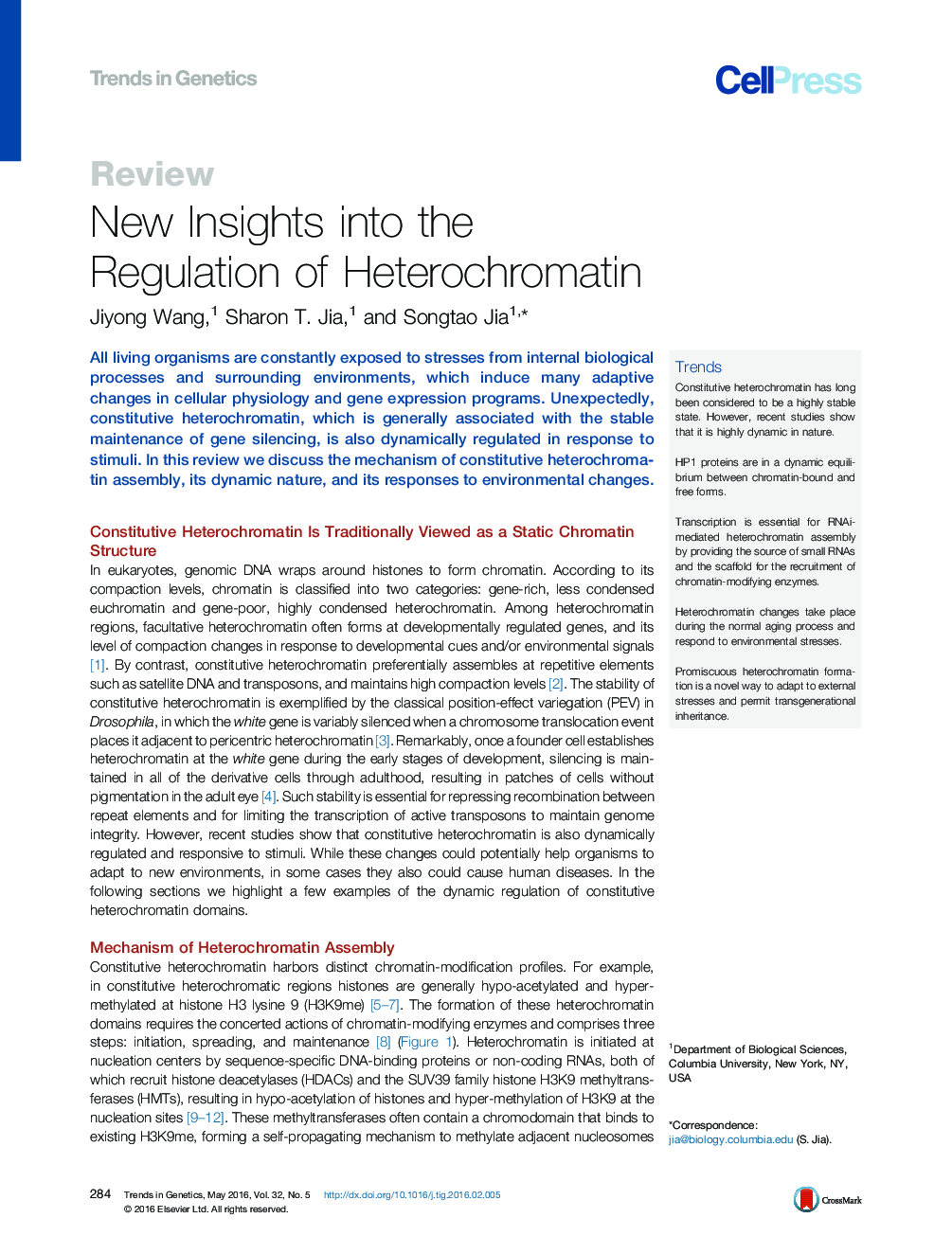| Article ID | Journal | Published Year | Pages | File Type |
|---|---|---|---|---|
| 2824627 | Trends in Genetics | 2016 | 11 Pages |
All living organisms are constantly exposed to stresses from internal biological processes and surrounding environments, which induce many adaptive changes in cellular physiology and gene expression programs. Unexpectedly, constitutive heterochromatin, which is generally associated with the stable maintenance of gene silencing, is also dynamically regulated in response to stimuli. In this review we discuss the mechanism of constitutive heterochromatin assembly, its dynamic nature, and its responses to environmental changes.
TrendsConstitutive heterochromatin has long been considered to be a highly stable state. However, recent studies show that it is highly dynamic in nature.HP1 proteins are in a dynamic equilibrium between chromatin-bound and free forms.Transcription is essential for RNAi-mediated heterochromatin assembly by providing the source of small RNAs and the scaffold for the recruitment of chromatin-modifying enzymes.Heterochromatin changes take place during the normal aging process and respond to environmental stresses.Promiscuous heterochromatin formation is a novel way to adapt to external stresses and permit transgenerational inheritance.
